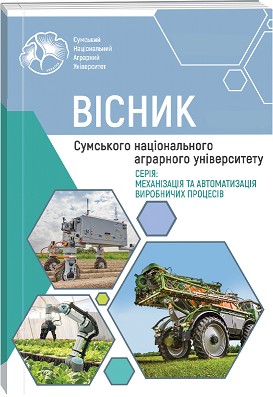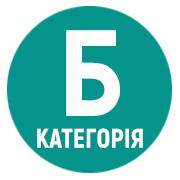THE METHOD OF INCREASE THE YIELD OF WINTER WHEAT USING ELECTROMAGNETIC RADIATION
Abstract
The article presents the results of the analysis of data obtained in laboratory conditions of exposure to electromagnetic radiation in the red and blue ranges, as well as their simultaneous exposure, with different exposure times. One of the most common varieties of winter wheat in the Eastern region was taken for research. The control "group" was the seed that was not subjected to any treatment. The obtained data, namely the energy of germination, laboratory germination and the length of roots and seedlings, allowed to conclude that the most significant effect on the energy of germination and laboratory germination had a variant of the combined action of both red and blue bands during 30 minutes. This approach to seed irradiation in the laboratory showed properties to increase the biopotential of seed material. Thus, it is the activation of a group of different photoreceptors, and phytochromes and cryptochromes, that is most effective. Treatment for 10 minutes had almost no effect at all wavelengths. This may be due to the fact that the effect of EMF has a prolonged effect and may manifest itself later. Germination energy and germination are studied at the initial (first week) stage of growth. The detected effect for winter wheat is explained, firstly, by the size of the seeds, secondly, the detected fact can be explained by the features of biochemical processes, in particular, their speed, which requires further study. Overall, the increase in laboratory similarity in seed germination energy ranged from 1 to 9%, which is insignificant in laboratory conditions, but can have a significant effect in field research conditions, taking into account weather conditions and other growing factors. No regularity of changes in the indicators of the length of roots and sprouts was found in all variants of the experiment, which may indicate the insensitivity of this indicator to EMV treatment.
References
2. Burgie E.S., Bussell A.N., Walker J.M., Dubiel K, Vierstra RD: Crystal structure of the photosensing module from a red/far-red light-absorbing plant phytochrome. Proc Natl Acad Sci U S A 2014, 111:10179-10184.
3. Cecchetti, Daniele & Pawełek, Agnieszka & Wyszkowska, Joanna & Antoszewski, Marcel & Szmidt-Jaworska, Adriana. (2022). Treatment of Winter Wheat (Triticum aestivum L.) Seeds with Electromagnetic Field Influences Germination and Phytohormone Balance Depending on Seed Size. Agronomy. 12. 1423. 10.3390/agronomy12061423.
4. Chitose Kami, Séverine Lorrain, Patricia Hornitschek, Christian Fankhauser, Chapter Two – Light-Regulated Plant Growth and Development, Editor(s): Marja C.P. Timmermans, Current Topics in Developmental Biology, Academic Press, Volume 91, 2010, Pages 29-66, https://doi.org/10
5. Conrad K.S. Manahan C.C., Crane B.R.: Photochemistry of flavoprotein light sensors. Nat Chem Biol 2014, 10:801-809.
6. Engelhard C., Wang X., Robles D., Moldt J., Essen L.O., Batschauer A., Bittl R., Ahmad M.: Cellular metabolites enhance the light sensitivity of Arabidopsis cryptochrome through alternate electron transfer pathways. Plant Cell 2014, http://dx.doi.org/10.1105/tpc.114.129809.
7. Galvão, V. C., & Fankhauser, C. (2015). Sensing the light environment in plants: photoreceptors and early signaling steps. Current opinion in neurobiology, 34, 46–53. https://doi.org/10.1016/j.conb.2015.01.013
8. Devesh Singh, Chandrajit Basu, Merve Meinhardt-Wollweber, Bernhard Roth (2015). LEDs for energy efficient greenhouse lighting. Renewable and Sustainable Energy Reviews, Volume 49, Pages 139-147, https://doi.org/10.1016/j.rser.2015.04.117.
9. Iqbal, Kanwal. (2020). Effect of Different Light on Wheat (Triticum aestivum L) Growth and Role of Phytochrome. Biotechnology and Bioprocessing. 1. 01-05. 10.31579/2766-2314/001.
10. Kong, SG., Okajima, K. (2016) Diverse photoreceptors and light responses in plants. J Plant Res 129, 111–114. https://doi.org/10.1007/s10265-016-0792-5
11. Lysyshenko, M., Pankova, O. (2016). Intensyfikatsiia biokhimichnykh protsesiv u nasinni silskohospodarskykh kultur. Inzheneriia Pryrodokorystuvannia, 44–47 (№ 2 (6)). [Method of intensification of seeds crops vital activity] https://repo.btu.kharkov.ua/handle/123456789/2975 (in Ukrainian).
12. Lamsal A, Devkota MP, Shrestha DS, Joshi S, Shrestha A (2019) Seed germination ecology of Ageratum houstonianum: A major invasive weed in Nepal. PLOS ONE 14(11): e0225430. https://doi.org/10.1371/journal.pone.0225430
13. Oyewole, Charles. (2016). The wheat crop. 10.13140/RG.2.2.13776.92164.
14. Sander W. Hogewoning, Govert Trouwborst, Hans Maljaars, Hendrik Poorter, Wim van Ieperen, Jeremy Harbinson. (2010). Blue light dose–responses of leaf photosynthesis, morphology, and chemical composition of Cucumis sativus grown under different combinations of red and blue light, Journal of Experimental Botany, Volume 61, Issue 11, Pages 3107–3117, https://doi.org/10.1093/jxb/erq132
15. Pankova O.V. Proteoliz riznykh sortiv yachmeniu v zalezhnosti vid obrobky nasinnia monokhromatychnym optychnym vyprominiuvanniam chervonoho diapazonu. (2010). Fotobiolohiia Ta Fotomedytsyna, 3–4, 66–69. [Proteolysis of different sorts of barley in dependence on treatment of seeds by monochromatic optical radiation of red range of spectrum] http://fnfjournal.univer.kharkov.ua/Ua/nomera/3_4_2010.pdf (in Ukrainian)
16. Pankova, O., Puzik, V., & Lysishenko, M. (2021). Vplyv elektromahnitnoho vyprominiuvannia na roslyny. TOV «Planeta-Print», Kharkiv, 159. [The influence of electromagnetic radiation on plants] https://repo.btu.kharkov.ua/bitstream/123456789/8096/3/Pankova_Effect_of_electromagnetic_radiation_monograph_2021.pdf (in Ukrainian)
17. Quail P. H. (2010). Phytochromes. Current biology : CB, 20(12), R504–R507. https://doi.org/10.1016/j.cub.2010.04.014
18. Quail P. H. (2010). Phytochromes. Current biology : CB, 20(12), R504–R507. https://doi.org/10.1016/j.cub.2010.04.014
19. Yoshida, H., Mizuta, D., Fukuda, N., Hikosaka, S., & Goto, E. (2016). Effects of varying light quality from single-peak blue and red light-emitting diodes during nursery period on flowering, photosynthesis, growth, and fruit yield of everbearing strawberry. Plant biotechnology (Tokyo, Japan), 33(4), 267–276. https://doi.org/10.5511/plantbiotechnology.16.0216a

 ISSN
ISSN  ISSN
ISSN 



